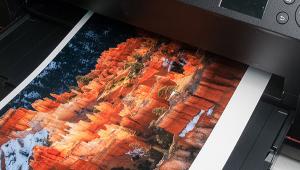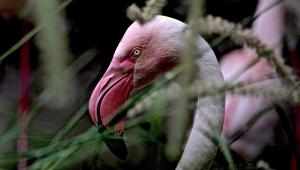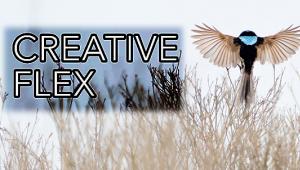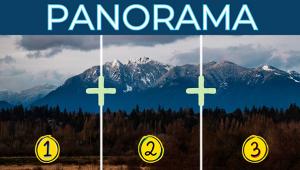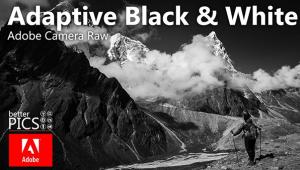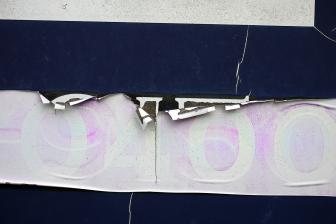Prints Charming: Our Favorite Photo Papers to Make Your Images Gallery-Ready

Everybody makes prints from their digital image files—everybody. It may just be cranking out a few photo prints from a birthday party on a kiosk at Walgreens, or wedding photographers having full albums printed at commercial labs, but contrary to some pundits who claim digital has destroyed the need for a physical print, they are still being made and enjoyed. As Mark Twain once said, “Facts are stubborn, but statistics are more pliable.”
Getting Started
In the heyday of the wet darkroom, there were two main choices: Resin-Coated (RC) papers that have two sealed polyethylene layers so no chemicals or water are absorbed into the base, significantly reducing the time required for processing, washing, and drying; or fiber-based baryta (barium sulfate) papers, which consist of a base coated with a mixture of barium and strontium sulfates. The baryta prevents chemicals from being absorbed onto the fibers, infiltrating the gelatin layer, and brightens the image while producing greater detail, extended tonal range, and archival stability.
To make sure prints look like what you see on a calibrated monitor, you’ll need an ICC profile, which is a data set that characterizes an output device using standards from the International Color Consortium. Every software driver includes ICC color profiles designed for the papers the printer manufacturers sell.
For other papers, ICC profiles may be downloaded from their manufacturers’ websites and some printer companies maintain a list of downloadable profiles from third-party papers for their printers. You can “roll your own,” too. There are software and hardware packages that let you print profiling targets, measure them, and create custom profiles. It isn’t cheap though. These packages can cost from $800 to several thousand dollars depending on the quality and extent of features.
Papers are available with different interpretations of white that can make the image’s tones warmer or cooler. What most people think of as white often has some blue in it. Some papers are contrastier, while others make colors more saturated. ISO Brightness (www.iso.org) specifications refer to a paper’s “absolute brightness,” which is a measurement of the reflectance of blue light with a specified spectral distribution peaking at 457nm compared to a perfectly reflecting surface. The higher the number, the brighter the paper, and numbers above 100 are possible.
Paper weight is specified in grams per square meter or gsm. Media thickness is expressed in thousandth of an inch or mils but may also be referred to as caliper. Then there are textures with a seemingly infinite number of choices available. Some inkjet printers can handle heavy textured papers and some cannot, so be sure to check your printer’s specifications before trying to stuff something in that won’t fit.
Breathing Color, Epson, And Awagami
Breathing Color’s Vibrance Baryta has a 100 percent cellulose fiber base and an inkjet-receptive coating containing barium sulfate that produces a glossy surface. Vibrance Baryta is bright white, free of optical brighteners, and has a fine surface texture. It is acid- and lignin-free and lends itself to printing black-and-white images. The paper is available in 8.5x11, 13x19, and 17x22-inch sheets, plus 40-foot rolls in widths of 17, 24, 36, and 44 inches.

Epson’s Exhibition Watercolor Paper Textured is made with the mould-made process that uses custom-made felts to produce a textured watercolor surface and finish. Mould-made paper is sometimes called handmade but there are differences: instead of being hand held, a slowly rotating cylinder mould picks up the paper stock from a vat and sheets are discharged onto a continuously moving felt and cylinder dried. Mould-made papers combine the uniformity of machine-made papers but retain the individual character of handmade papers. Epson’s 22 mil and 310 gsm Exhibition Watercolor Paper Textured is 100 percent cotton fiber and acid-, lignin-, and Optical Brightening Agent (OBA)-free. The paper is available in 50-foot rolls in widths of 17, 24, and 44 inches and in 8.5x11, 13x19, and 17x22-inch sheets.

"Epson’s Exhibition Watercolor Paper Textured is made with the mould-made process that uses custom-made felts to produce a textured watercolor surface and finish."

Washi is a style of paper first made in Japan and is commonly produced using fibers from the bark of the gampi tree, mitsumata shrub, or paper mulberry. Awagami inkjet paper is intended for high-quality inkjet printing and preserves the tactile feel of washi while improving former printing issues of color reproduction and bleed.
Awagami Kozo Thick Natural Fine Art Inkjet Paper is made using eco-friendly raw materials of kozo (mulberry) fibers that are soft, strong, and pH neutral. The 110 gsm white base is useful for both monochrome and color images having an antique feel without looking overtly old. It’s available in popular European sizes of A5, A4, A3, A3+, A2, and A1.

Canon, Arista, Red River Paper, And Canson Infinity
Canon doesn’t offer its fine art papers in sheets; only 40-foot rolls. Artistic Matte Canvas, 340 gsm is a cotton/polyester blend (35/65 percent), double weave canvas with a fast drying, matte finish surface. This canvas doesn’t use OBA and is ideal for portraits and gallery prints where a traditional oil-on-canvas look is desired.
Students and others on a budget should look at the Arista II line of inkjet papers, including the 210 gsm Fine Art Bright White Cotton Inkjet Paper. It’s an environmentally-friendly, smooth matte, 100 percent cotton rag, acid-free, fine art double-sided inkjet paper available at a single-sided price. Twenty sheets of letter-sized paper sells for $8.99 and 50 sheets are $22.49.
The Arista Americana line is a unique inkjet fabric with products named for American icons. Rushmore 160 gsm is a 50/50 cotton/polyester blend fabric, cleaned and bleached to be free of optical brighteners, producing a natural finish. It includes a low-tack polypropylene backing material for increased rigidity and smooth feeding through most inkjet printers. It’s available in sheets (11x17, 13x19, 17x22) and 40-foot rolls in widths of 24, 36, 44, and 54 inches.

"Innova Art’s Smooth Cotton Natural White 315 gsm paper is OBA-free and is the company’s smoothest 100 percent cotton acid-free paper surface. It’s treated with Opti-coat, Innova’s matte coating to assure Dmax and brilliant color."
San Gabriel SemiGloss Fiber from Red River Paper is museum-grade, 100 percent cotton paper that’s free of acid, lignin, and chlorine. It is buffered and coated for inkjet printing. It’s a thick (13.9 mil), 300 gsm paper made using pure barium sulfate in “natural white.” San Gabriel SemiGloss Fiber is available in sheets from 4x6 to 17x25 inches and 50-foot rolls in widths of 17 and 24 inches.
Canson Infinity offers museum-quality fine art and photo inkjet paper and canvas and is the name given to materials crafted in the Canson and Arches mills. Aquarelle Rag 240 gsm is a mould-made, 100 percent rag, watercolor paper for the fine art market. It’s available in sheets (letter, 11x17, 13x19, 17x22) and 50-foot rolls in widths of 24, 36, and 44 inches.
Innova Art, Hahnemühle, Pictorico, And Hawk Mountain
Innova Art’s Smooth Cotton Natural White 315 gsm paper is OBA-free and is the company’s smoothest 100 percent cotton acid-free paper surface. It’s treated with Opti-coat, Innova’s matte coating to assure Dmax and brilliant color. The paper is available in sheets from A4 to 17x22 inches and 15-meter (50-foot) rolls in widths from 17 to 60 inches.
Hahnemühle, who’s been making paper since 1584, offers a Digital FineArt Collection in three ranges: Matt FineArt (smooth and textured); Glossy FineArt; and Canvas FineArt, which provides canvases of different gsm and matte, glossy, or metallic finishes. Their 350 gsm Museum Etching is a natural white, 100 percent cotton paper with guaranteed archival standards. It’s available in 39-foot rolls as well as sheets, including deckle-edged options.
Pictorico’s ART Kenaf comes in two thicknesses and two finishes—regular and Unryu with tiny ribbons of fiber woven throughout. These two-sided papers have a matte finish and are acid-free, made using environmentally-friendly Kenaf fibers. Kenaf is a fast-growing, high-yield annual with exceptional papermaking characteristics, requiring less chemicals, heat, and time to process.
Hawk Mountain’s cotton papers are produced in accordance with U.S. Library of Congress standards and are acid- and lignin-free as well as buffered to prevent long-term degradation. Sparrowhawk is a 12 mil, 220 gsm, bright white, smooth-sided, high-alpha cellulose paper with a durable inkjet coating on both sides and is available in 100-foot rolls and letter, 13x19, and 17x22-inch sheets.

Ilford, Moab, Magiclée, And Inkpress
Ilford was founded in 1879 as Britannia Works by Alfred Hugh Harman who made gelatin dry plates in his basement. Ilford’s Galerie Prestige Gold Cotton papers are mould-made, 100 percent cotton rag papers crafted for fine art photographers. The 540 micron (21.5 mil) material is available in letter and 13x19-inch sheets and 50-foot rolls of 24, 44, and 50-inches wide and is compatible with pigment-based printers.
Moab is part of the Legion Paper family, a distributor of fine art papers sourced from mills around the world. I’ve written about Moab’s 300 gsm Slickrock Metallic Silver paper in my former column. It’s a shiny, metallic inkjet paper with an instant dry coating that I’ve used for automotive and even portrait images. Their classic 300 gsm Entrada Rag Bright White is a 100 percent cotton smooth fine art paper that’s archival, acid- and lignin-free with an expanded color gamut, natural contrast, and high ink load. It’s compatible with dye and pigment inks. Entrada Rag Bright White is available in sheets from 5x7 for intimate landscapes up to 25-sheet boxes of 36x48-inch paper.
Magiclée Verona 250 HD is a 250 gsm 100 percent cotton fine art paper for digital imaging that has a smooth, matte finish. It has a water-resistant coating that’s free of optical brighteners and is designed for use with dye, pigment, thermal, and piezo printers. It’s available in 10- or 50-foot rolls in widths of 24, 36, 44, and 50 inches.
Inkpress offers a line of Inkpress and Sihl Pro papers, including Inkpress Fine Art Matte, which contains 25 percent cotton fibers plus 75 percent wood fibers for dye- and pigment-based printers. It contains no OBA and is acid- and lignin-free, printable on both sides, and is an economical alternative for portfolios that don’t require a 100 percent cotton rag paper. It’s available in sheets from 4x6 to 17x22 inches and 17, 24, and 44-inch wide 100-foot rolls.
In the Pro line, Inkpress Satin Fiber is a 320 gsm 100 percent cotton paper with a micro-textured surface that allows handling without fingerprints. It’s compatible with pigment-ink printers from Canon, Epson, and HP and has a high Dmax with excellent gray tones and high contrast, making it useful for black-and-white printing. Inkpress Satin Fiber also has excellent saturation and skin tone reproduction.

ProMaster, Strathmore, Premier Imaging Products, And Museo
ProMaster’s Fine Art Inkjet Paper is 100 percent cotton rag, acid-free, and contains no optical brighteners. The paper dries quickly and the surface is compatible with dye and pigment printers from Canon, Epson, and HP. It’s available in letter, 11x17, and 13x19-inch sheets as well as 40-foot rolls in widths of 24 and 44 inches.
Strathmore’s Watercolor Paper is a 315 gsm, 18 mil thick natural true watercolor paper with a medium texture cold press finish. It has a matte coating (one side) for inkjet receptivity and is ideal for producing prints with the look and feel of a painting. It’s available in packages of eight letter-sized sheets.
PremierArt Smooth BW Fine Art Paper by Premier Imaging Products is a bright white 100 percent cotton mould-made paper that’s acid- and lignin-free. Its bright white base yields a high Dmax with a wide tonal range designed for long life when used with pigmented ink systems. It’s available in weights of 200 and 310 gsm.
Museo is the brand name given to the family of digital fine art media originally developed by Crane & Co. and now owned by Coveris Advanced Coatings. Museo Portfolio Rag 300 gsm is 100 percent acid-free cotton, buffered, and with no optical brighteners. Museo Portfolio Rag was designed for museum exhibition and when you need extended tonal range on a surface that won’t detract from your photographs.
Trends in inkjet media are constantly changing. Highly glossy papers were initially popular but over time there’s been a shift to softer, heavier, more premium papers. Because when all is said and done, what’s left of the capture experience is what you can hold in your hand.
Treat your choice of inkjet papers the way photographers have always done: Experiment with different media to learn their individual personalities, including base color, contrast, and ink absorption. In short, get in touch with the material in the same the way it was done in the traditional wet darkroom. Then use this uniqueness when it’s appropriate or even inappropriate for a specific image. Happy printing!
Acknowledgements: Thanks to Digital MD’s Kevin Elliott (www.digitalmd.net) for his insights on the technology and methods for making inkjet prints. Special thanks to Freestyle Photographic’s Patrick DelliBovi for taking me inside the wide world of inkjet papers and whose company offers some of the media mentioned.
Joe Farace invites readers to visit his blogs, including Saving the World, One Pixel at a Time (www.joefaraceblogs.com) and Mirrorless Photo Tips (www.mirrorlessphototips.com), to read new how-to posts Monday through Friday.
- Log in or register to post comments


